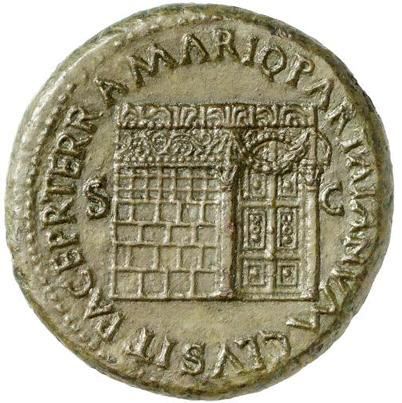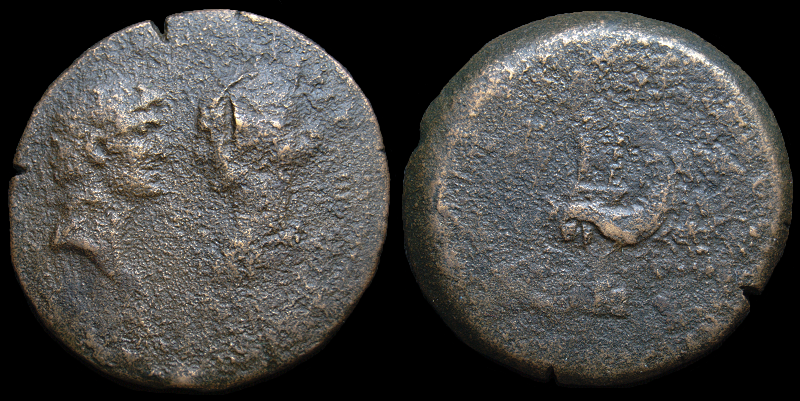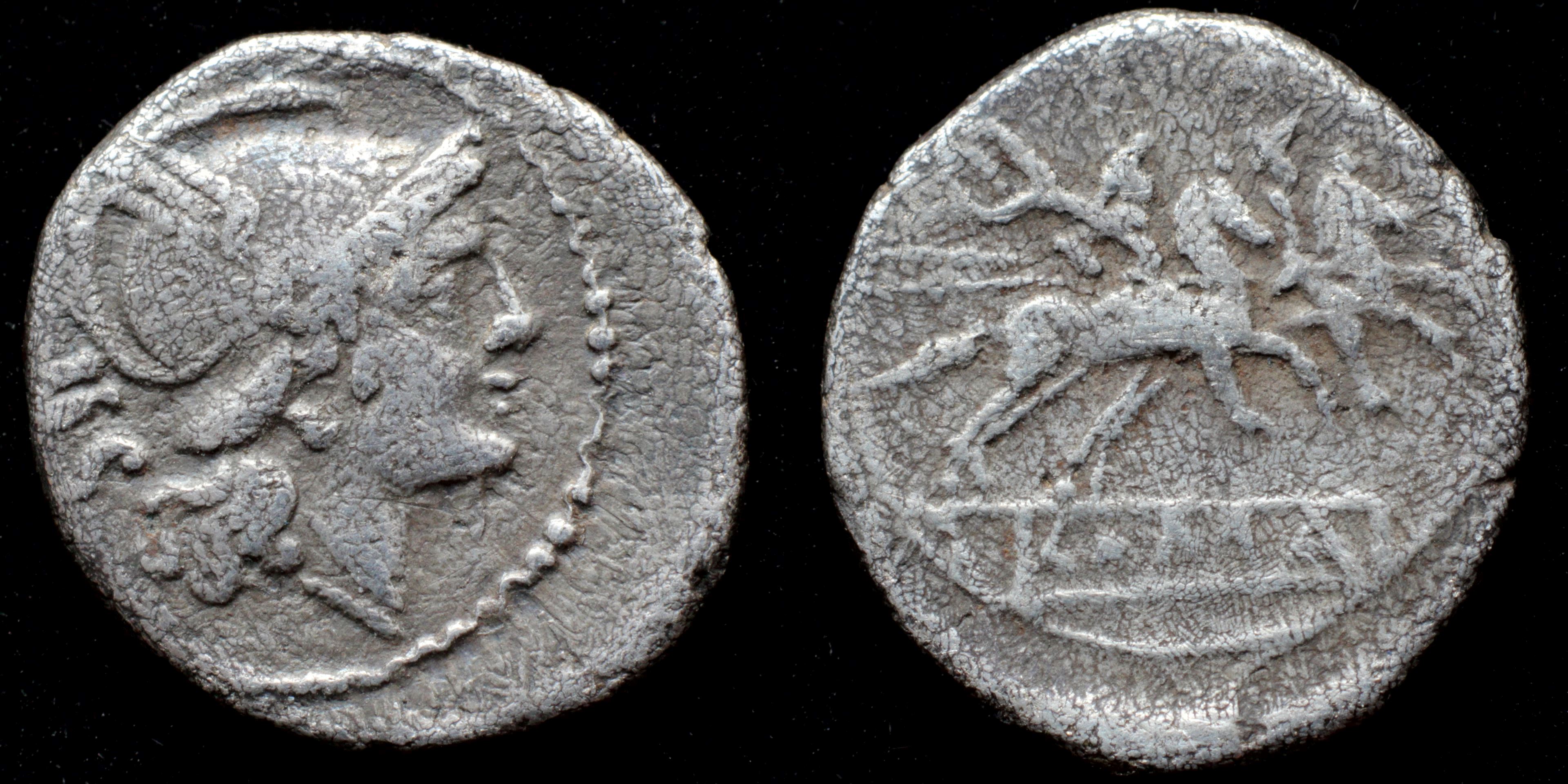The Sestertius was an ancient Roman coin. During the Roman Republic it was a small, silver coin issued only on rare occasions. During the Roman Empire it was a large brass coin.
The name sestertius means "two and one half", referring to its nominal value of two and a half asses, a value that was useful for commerce because it was one quarter of a denarius, a coin worth ten asses. The name is derived from semis, "half" and "tertius", "third", in which "third" refers to the third as: the sestertius was worth two full asses and half of a third.
The brass sestertius typically weighs in the region of 25 to 28 grammes, is around 32–34 mm in diameter and about 4 mm thick.
Sestertii continued to be struck until the late 3rd century, although there was a marked deterioration in the quality of the metal used and the striking even though portraiture remained strong.
The name sestertius means "two and one half", referring to its nominal value of two and a half asses, a value that was useful for commerce because it was one quarter of a denarius, a coin worth ten asses. The name is derived from semis, "half" and "tertius", "third", in which "third" refers to the third as: the sestertius was worth two full asses and half of a third.
The brass sestertius typically weighs in the region of 25 to 28 grammes, is around 32–34 mm in diameter and about 4 mm thick.
Sestertii continued to be struck until the late 3rd century, although there was a marked deterioration in the quality of the metal used and the striking even though portraiture remained strong.

(1)
Marcus Antonius

An
AE
Sestertius
struck 38-37 BC
in
Achaea
Obverse: M ANT • IMP TER COS DES ITER ET TER III VIR R• P • C •, bare head of Antony right vis-à-vis head of Octavia left.
Reverse: M • OPPIVS • CAPITIO • P[R) • PR • PRAEF • CLASS • F • C • - Mark Antony and Octavia in quadriga of hippocamps; in l. field, HS and below, Δ and astragalos.
Diameter:
40 mm
Die Orientation: -
Weight: 30.16 g
Die Orientation: -
Weight: 30.16 g
Provenance: Aste Bolaffi - Auction 33 (29 November 2018), lot 310.
RPC I 1462

An
AR
Sestertius
struck 211-210 BC
in
Rome
Obverse: head of Roma right wearing winged helmet; IIS
Reverse: Dioscuri on horses riding right holding spears and reins, stars over pilei; ROMA
Diameter:
12 mm
Die Orientation: -
Weight: 1.2 g
Die Orientation: -
Weight: 1.2 g
No notes for this coin
Crawford 44/7
